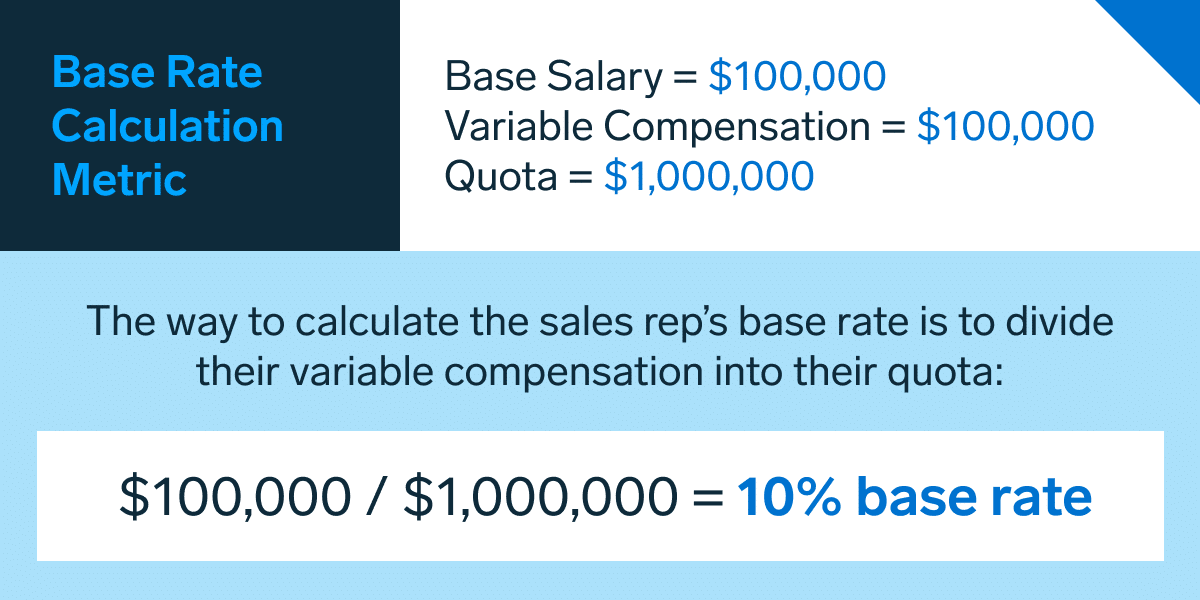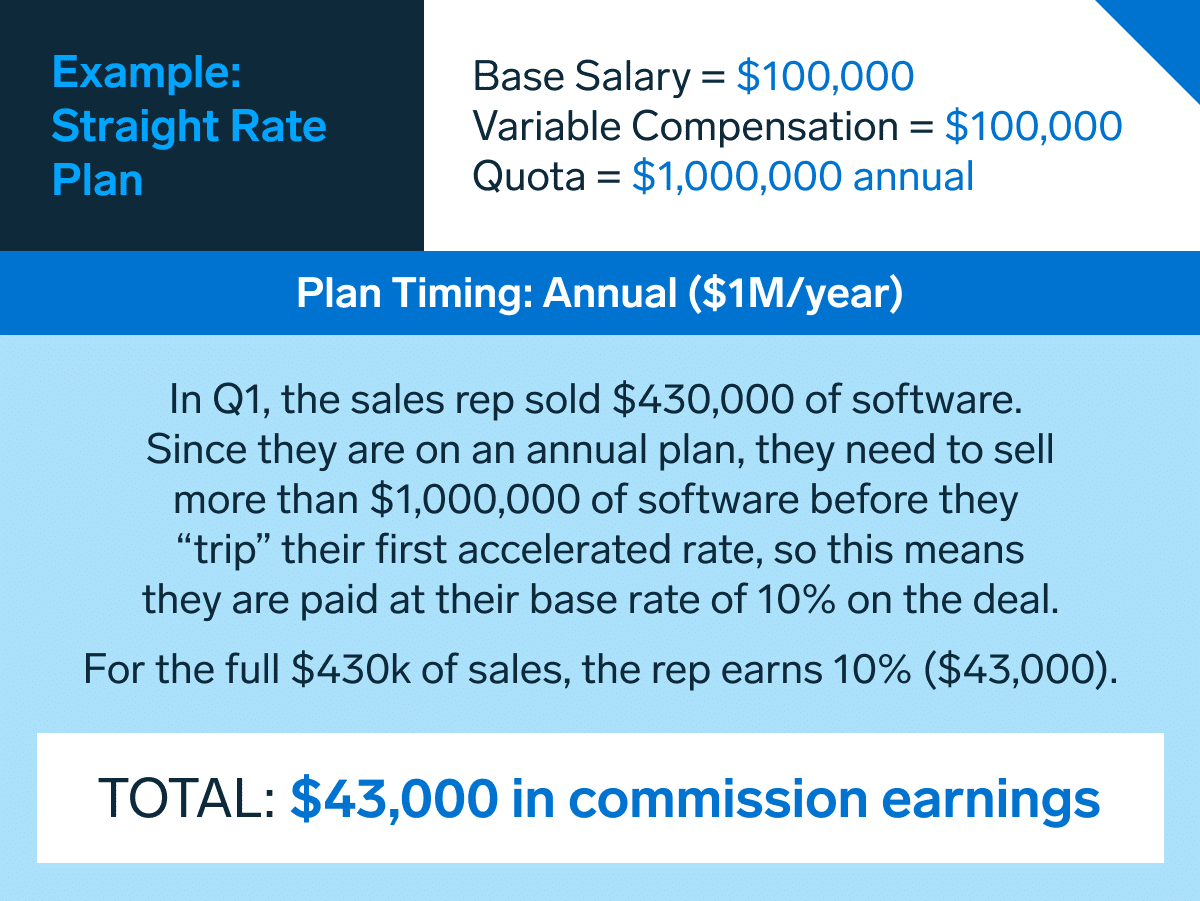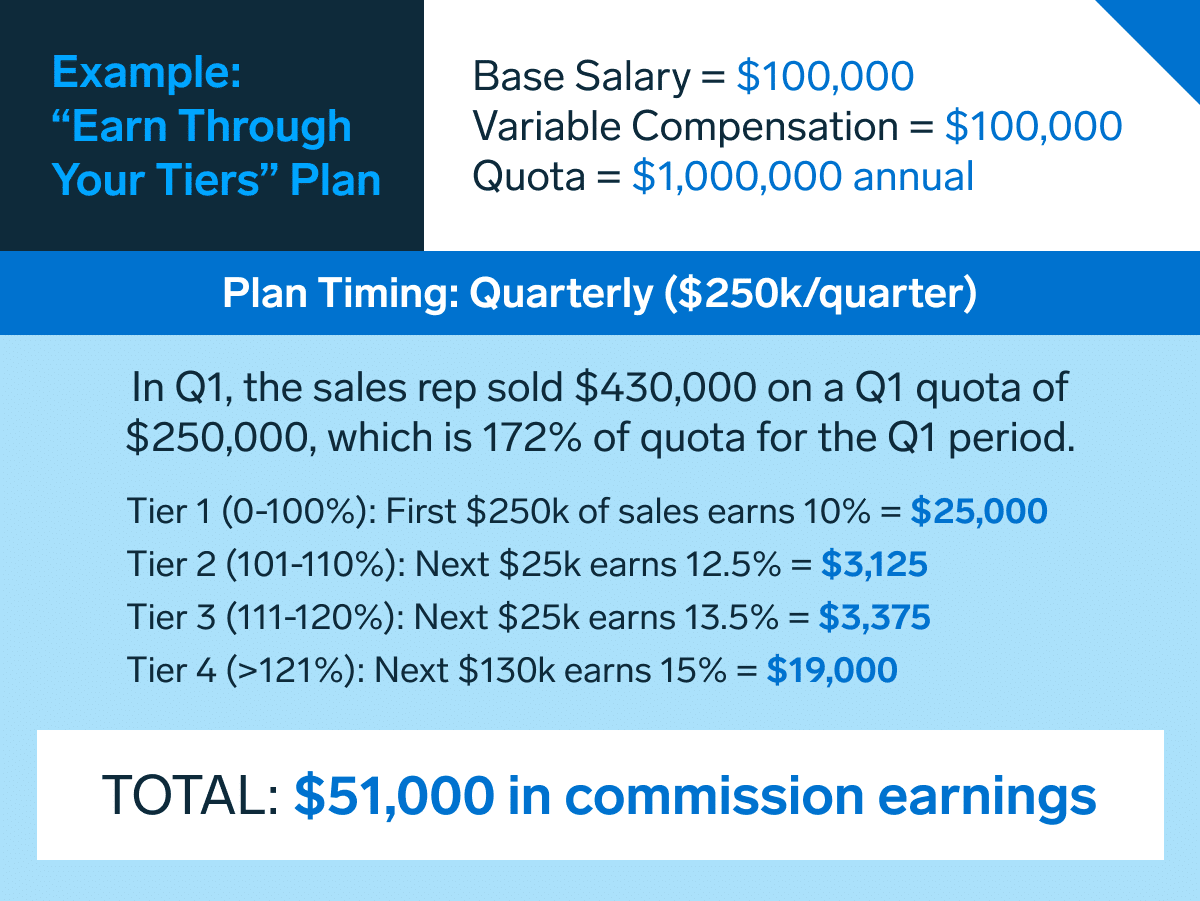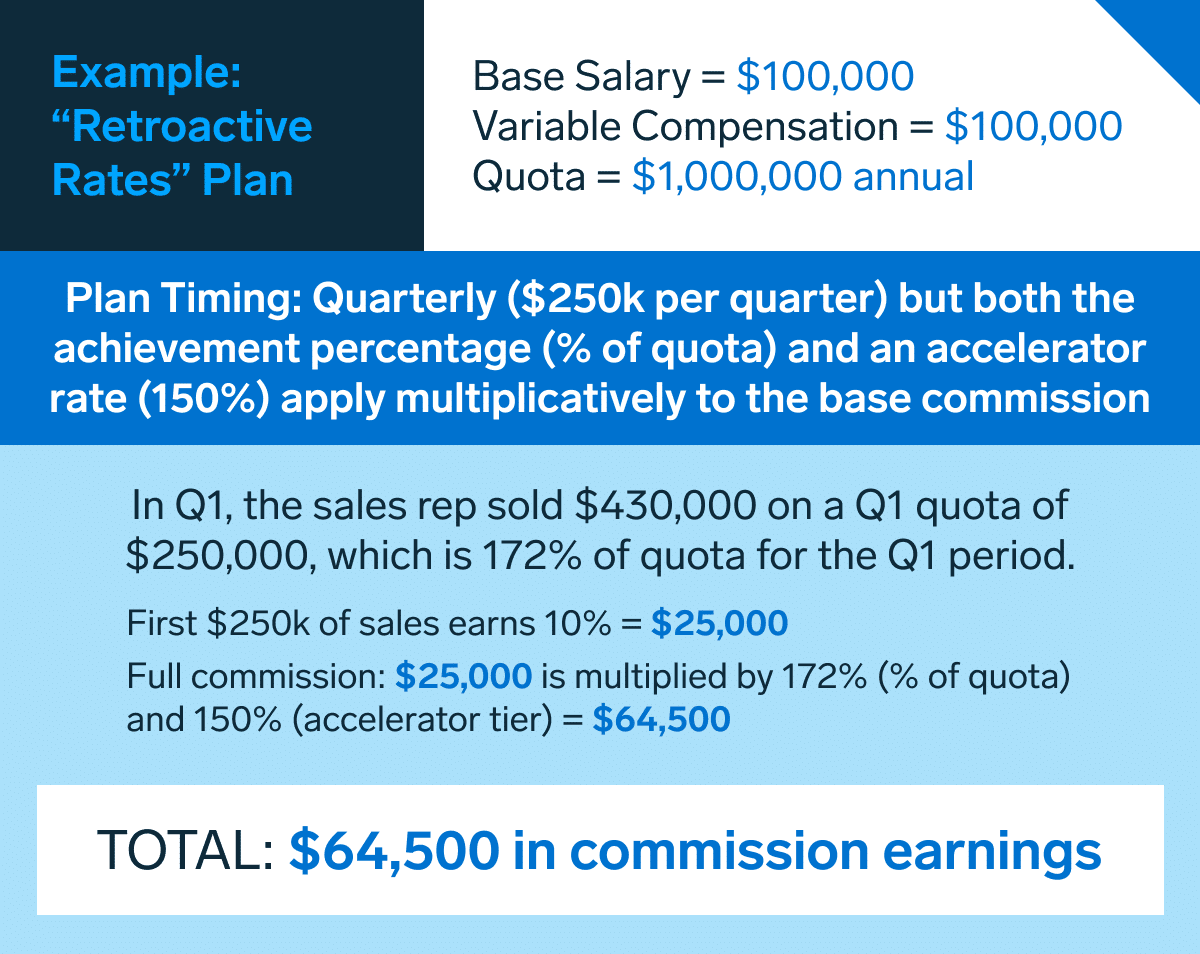This is no easy task – attempting to guide early-stage companies on building their first sales compensation plan. Phew… cue the pitchforks for all the incoming commentary!
But it’s worth the try. In my role here at Battery, I work with a lot of companies that are just figuring out their GTM motions, many of which have less mature comp plans. I’m using this blog to cover some of the comp-planning fundamentals I often review in those conversations.
The Basics of Comp Planning
There are three of what I call the “core covenants” of a comp plan. First, make it simple – a rep sells X, which is multiplied by Y rate, which means they earn Z. Next, make it logical – the sale amount multiplied by the rate should produce what a seller’s variable commission will be. Lastly, and most importantly, it should be motivational.
Let’s start through the lens of the sales rep. When I would interview top-tier AEs, I’d often hear a few old chestnuts in the interview cycle:
- How much did the top AE earn last year?
- How many of your reps made quota?
- What will my territory be?
- Can I see a copy of the comp plan?
Some of these questions may be difficult to answer for very early-stage companies, but they are all questions you should aspire to answer proudly. And if you want to hire top-tier talent, then these are all questions you should anticipate.
This last of these questions – can I see the comp plan – is the moment of truth. If you’re scared of sharing your comp plan, something’s wrong. The comp plan is a great recruiting tool, and if built correctly, it’s a secret weapon for landing top performing reps.
The Core Elements of a Comp Plan
There are three key elements in any comp plan: the quota, the timing of the quota and the variable commission amount. These three work together to form the comp plan, so let’s start with them and then walk through a few examples.
Quota
Quota is typically a dollar amount of sales that a rep needs to close. In higher velocity orgs, it could be based on the number of logos signed. In consumption models, there could be a number of variables. But for simplicity’s sake, dollar-based quotas are the most common, so let’s run with that and say our quota is $1,000,000.
Timing
Per above, we said the quota amount is one million dollars. Next, we must determine the period of time allotted to meet the quota. The most common options for quota calendars are monthly, quarterly and annual quotas. This timing element is critical, as it creates a mindset for how sales reps grind to get deals done.
For instance, if an AE has a quarterly quota that includes accelerated rates for >100% performance (more on accelerators below), and they are above quota, they realize that by closing more business while above quota = more earnings for me. This is the motivational factor of comp plans.
And smart sales reps know, the more quota cycles with an accelerator, the more chances they have to earn a bigger commission.
Variable
Sales reps are unique people. They accept a job where some portion of their pay is fixed – their base pay, and then some portion of their pay that is variable – the commissionable amount. Not everyone is fit to be on this type of plan: If I sell lots, I make lots. But if I don’t sell, then I don’t make commissions (and may even lose my job).
In the SaaS world, it’s very common to see sales reps on what we call a 50/50 plan, meaning they make 50% of their target earnings on base salary, and the other 50% on variable commissionable amount. Together, base salary and commission are referred to as OTE: on-target earnings.
You may ask – why would anyone subject themselves to this type of financial and mental torture? Because the OTE is predicated on sales reps achieving 100% of the quota. A good comp plan incentivizes a rep to go above 100% . . . because it provides greater rewards. This is the reason for an accelerator. The accelerator is a higher commission rate paid to the sales reps who overachieve on their quota. For any company not building an accelerator or too weak of an accelerator into your plan, you’re creating obstacles to hiring good talent.
Before we dive into examples, let’s cover the most basic comp planning formula – calculating the base rate and the accelerated rate. I often see comp plans that don’t “foot” out on their mathematical calculations, so want to provide this simple metric that calculates the base rate.

What this means is that if a rep sells $1M of software and gets paid 10%, they make $100,000. Pretty easy, huh?
You’d be stunned by how many companies don’t use this simple base rate formula. Instead, they read a blog, get some ideas and then decide to “force” their commission rates. I hear strange comments like, “I don’t want my reps to make more than 9%,” or, “I want to cap the amount my sales reps can earn.”
This is a bad idea. If the rep is selling software, your company is making money. If the rep is selling more than they are supposed to, they should share in the upside.
Accelerated Rates:
We have now established the formula for determining the base rate that your sales reps will be paid. Now let’s figure out the high motivation part – the accelerators.
Unfortunately, there isn’t a common methodology to determine the accelerator rate, but a commonly used rule of thumb is 125%. Meaning, if your base rate is 10%, and you overachieve your quota, then the rate increases by 125% – to 12.5%. But wait, there’s more! Some comp plans “tier” rates above 100% of quota. For instance, you’ll see plans that pay 125% for 101-110% of performance, and then 135% for 111-120% of performance, and then maybe 150% for 121%+ of performance. This is all about the motivation factor – reps chase after the higher rates–which is great for everyone. The rep who achieves more sales earns bigger commissions, and the company gets more revenue NOW.
While there isn’t a specific formula for determining the accelerator, seasoned sales reps know a good one from a poor one. Again, if you’re talking the game of hiring the best talent, then be aware that the best sales talent goes to where it can make lots of money.
PLAN EXAMPLES:
Let’s explore how comp plans work. This is fun, as you’ll see how timing and tiers really play into the earnings potential for a sales rep.
For all examples, let’s assume the rate tiers are as follows:

Example 1: Straight Rate Plan
This is the simplest version of a comp plan and truthfully not very exciting for a sales rep. But it sets the tone, so let’s start with it.
Pretty straightforward – I sold 43% of my quota and I made 43% of my variable pay. As stated above, it is not too complex but also doesn’t motivate me to work hard to drive toward a monthly or quarterly timeframe in closing my deals.

Example 2: Earn Through Your Tiers Plan
This is where comp planning gets fun, as this type of plan offers a bit more “juice” for the sales rep. In this case, the rep has a $1M annual quota, but it’s quarterly timing, so that means that the rep has a $250K quarterly quota. This also means that if the rep sells more than $250K in the quarter, then they move up to their accelerated rates.

See what happened there between example 1 and example 2? The rep closed the same $430K deal, but in one case earned $43,000, and in the other, earned $51,000.
In scenario one, the rep closed 43% of their annual quota and earned exactly 43% of their variable. In scenario 2, they closed 43% of their annual quota, but because it was a quarterly timed plan, they earned 51% of their annual commissions. Or said another way – the rep was supposed to earn $25K at 100% of quota in example two. They sold 172% of their Q1 quota, and they earned 204% of their targeted variable (they earned $51K versus a $25K target).
This plan accelerated nicely and is motivational.
Example 3: Achieve the Next Cliff (Retroactive Rates Style Plan)
This is the most motivational plan of the examples. This plan allows the rep to move up once they cross a tier and get paid for all dollars at that higher rate. Sales reps love this plan because they earn that higher rate on all the dollars sold for that period.

The sales rep earns $64,500 in this instance. They sold $430K, which is 172% of quota for the Q1 period, therefore they are at their top accelerator tier = 150%. To calculate their commission, take the $25,000 commission at 100% of plan, multiply by 172% (their percentage of performance) and multiply that by 150%. In this instance, the sales rep sold 172% of their quota, and they made 258% of their on-target variable for the quarter. Now you see why people go into sales!
In Conclusion…
To reiterate, these are just the basics. This blog doesn’t cover commission-payment frequency, for example, but that’s another competitive tool. Comp plans can quickly become more complex by incorporating components that pay differently for multi-year agreements, pay differently on how the cash is collected (quarterly vs annual upfront), pay incentives for consistency, that pay rates for implementations, etc.
Good sales reps get ahold of the comp plan and dissect it quickly, determining the best ways to maximize their earnings. As CEO or CRO, take the challenge yourself – pull out your comp and calculate how much an AE would earn. Is it motivational and will it attract talent, or do you need to give your plans a face-lift?
The information contained herein is based solely on the opinion of Bill Binch and nothing should be construed as investment advice. This material is provided for informational purposes, and it is not, and may not be relied on in any manner as, legal, tax or investment advice or as an offer to sell or a solicitation of an offer to buy an interest in any fund or investment vehicle managed by Battery Ventures or any other Battery entity. The views expressed here are solely those of the author.
The information above may contain projections or other forward-looking statements regarding future events or expectations. Predictions, opinions and other information discussed in this publication are subject to change continually and without notice of any kind and may no longer be true after the date indicated. Battery Ventures assumes no duty to and does not undertake to update forward-looking statements.


A monthly newsletter to share new ideas, insights and introductions to help entrepreneurs grow their businesses.





